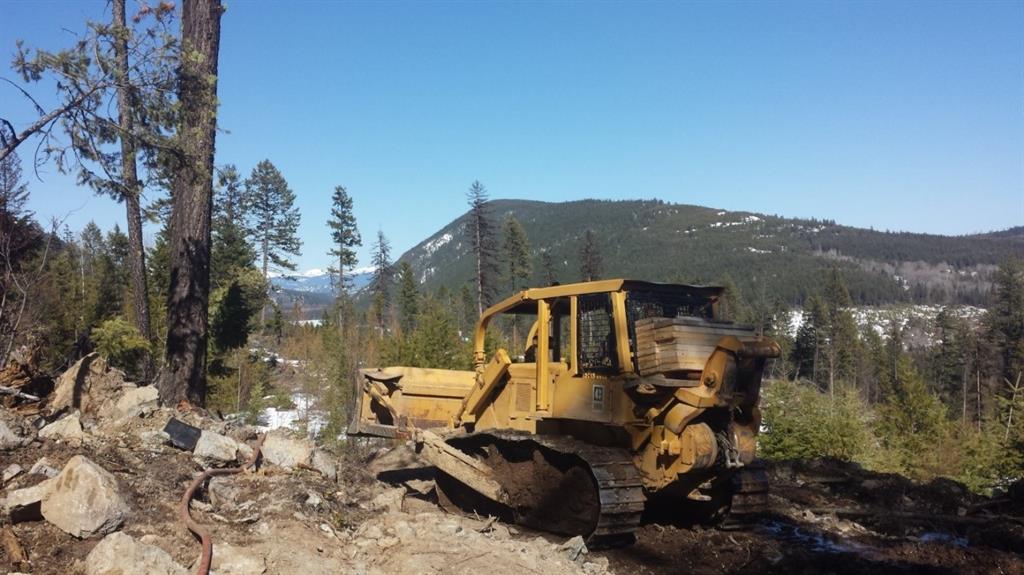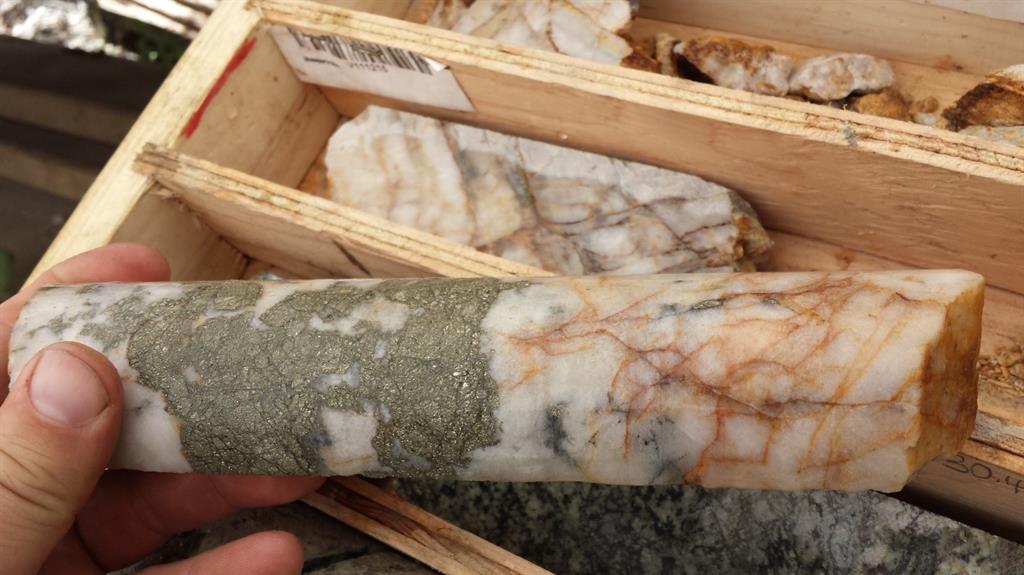
- 129 g/t gold and 1,154 g/t silver over 7.28 meter core length (majority of samples greater than the upper 500 g/t analytical limit for tellurium).
- High-grade quartz vein intersection is near-surface (18 to 23 meters vertical depth).
- Part of exploratory shallow drilling designed to define high-grade mineralization and expand the understanding of controls on mineralization.
- Telluride mineralization is common in vein intersection. Visible gold in one section.
VANCOUVER, BC / ACCESSWIRE / January 11, 2019 / GGX Gold Corp. (TSX-v: GGX), (OTCQB: GGXXF), (FRA: 3SR2) (the “Company” or “GGX“) is pleased to announce it has received drill core analytical results for drill holes COD18-65 to COD18-67 completed during the November 2018 diamond drilling program at its Gold Drop Property near Greenwood, southern British Columbia. COD18-67 intersected near-surface high-grade gold and silver with significant tellurium in the COD quartz vein. COD18-67 tested the southwest region of the COD vein in an area of prior high-grade gold drill intercepts. The mineralized COD vein system has been traced by drilling and / or trenching for approximately 400 meter strike length and is open to the northeast, at depth and possibly to the southwest. Highlights for COD18-67 include:

The November 2018 diamond drilling program (11 drill holes: COD18-61 to COD18-71) tested the southwest region of the COD vein in an area of high-grade gold and silver mineralization. The COD vein is located in the Gold Drop Southwest Zone. Prior 2018 drill holes in this part of the COD vein intersected near-surface high-grade gold and silver mineralization (News Releases of August 15 and 22, 2018). These include (core length):
- COD18-45: 50.1 g/t gold and 375 g/t silver over 2.05 meters
(including 167.5 g/t gold, 1,370 g/t silver & >500 g/t tellurium over 0.46 meters).
- COD18-46: 54.9 g/t gold and 379 g/t silver over 1.47 meters
(including 223 g/t gold, 1,535 g/t silver & > 500 g/t tellurium over a 0.30 meters).
- Approximate 20 meter (COD18-45) to 23 meter (COD18-46) vertical depth of high grade gold and silver mineralization.
Drill holes COD18-45 and COD18-46 were drilled at 45 and 50 degree dips to the west from the same site to intersect the northeast-southwest striking COD vein.
Intersections exceeding 1 g/t gold for drill holes COD18-65 to COD18-67 are listed in the table below. Since true widths cannot be accurately determined from the information available the core lengths (meters) are reported.
| Hole ID | From (m) | To (m) | Length (m) | Au (g/t) | Ag (g/t) | Te (g/t) | Description |
| COD18-66 | 16.35 | 16.75 | 0.40 | 1.02 | 6.22 | 3.46 | Quartz veinlet & altered wall rock. |
| COD18-66 | 22.96 | 23.90 | 0.94 | 6.97 | 46.8 | 34.4 | Quartz vein |
| COD18-67 | 23.19 | 30.47 | 7.28 | 129.1 | 1,154.9 | Quartz vein with +/- tellurides | |
| COD18-67 | incl. 23.58 | 23.95 | 0.37 | 106 | 1250 | >500 | Quartz vein with tellurides & VG |
| COD18-67 | incl. 24.50 | 27.63 | 3.13 | 232.1 | 2,001.1 | >500 | Quartz vein with +/- tellurides |
| COD18-67 | incl. 29.70 | 30.47 | 0.77 | 143 | 1,372.9 | >500 | Quartz vein with tellurides |
Samples of felsic intrusive wall rock adjacent to the high grade vein in COD18-67 returned low grade gold values of 0.77 g/t (22.00-23.19 meters) and 0.57 g/t (30.47-32.72 meters).


All of the November 2018 drill holes were collared within 25 meters of holes COD18-45 and COD-46, the objective to define the high-grade mineralization in this part of the COD vein and to provide information on the controls on mineralization. Holes COD18-61 to COD18-66 were drilled to the west and slightly northwest at dips of 45 to 60 degrees to intersect the approximately northeast striking vein(s). Holes COD18-67 to COD18-71 were drilled at dips of 45 to 60 degrees slightly northeast to intersect the vein(s) at a shallower angle, the objective being to test the continuity of the quartz veining and mineralization.
Analytical results for drill holes COD18-61 to COD18-64 were reported in the Company’s News Release of January 9, 2018, the highlight being an intersection of 28.0 g/t gold, 424.7 g/t silver and 150.4 g/t tellurium over 1.17 meter core length in COD18-63.

The drill core was split with half core samples securely packaged and delivered to ALS Canada Ltd. in Vancouver, BC. The core samples were analyzed for gold by Fire Assay-Atomic Absorption and for 48 elements (including silver and tellurium) by Four Acid – ICP-MS. Samples exceeding 100 g/t gold were re-analyzed for gold by Fire Assay – Gravimetric Finish. Samples exceeding 100 g/t silver were re-analyzed for silver by Four Acid – ICP-AES. Samples exceeding 1,500 g/t silver by Four Acid – ICP-AES were re-analyzed for silver by Fire Assay – Gravimetric Finish. Quality control (QC) samples were inserted at regular intervals.
Gold and silver bearing quartz veins occur in multiple regions on the property with high grade gold reported (samples exceeding 1 oz. / ton gold reported).
Historic gold and silver production occurred at the Gold Drop, North Star, Amandy and Roderick Dhu vein systems.
David Martin, P.Geo., a Qualified Person as defined by NI 43-101, is responsible for the technical information contained in this News Release.
“With each additional drill program, we are significantly improving the gold grade mineralization of the COD Vein. We continue to expand the known strike length of the mineralized vein system, which remains open in several directions. With another new near-surface high-grade gold-zone and increasing strike length, we are very satisfied with the results generated and optimistic on the gold potential of the Gold Drop project.” comments Barry Brown, President.

On Behalf of the Board of Directors,
Barry Brown, Director
604-488-3900
[email protected]












